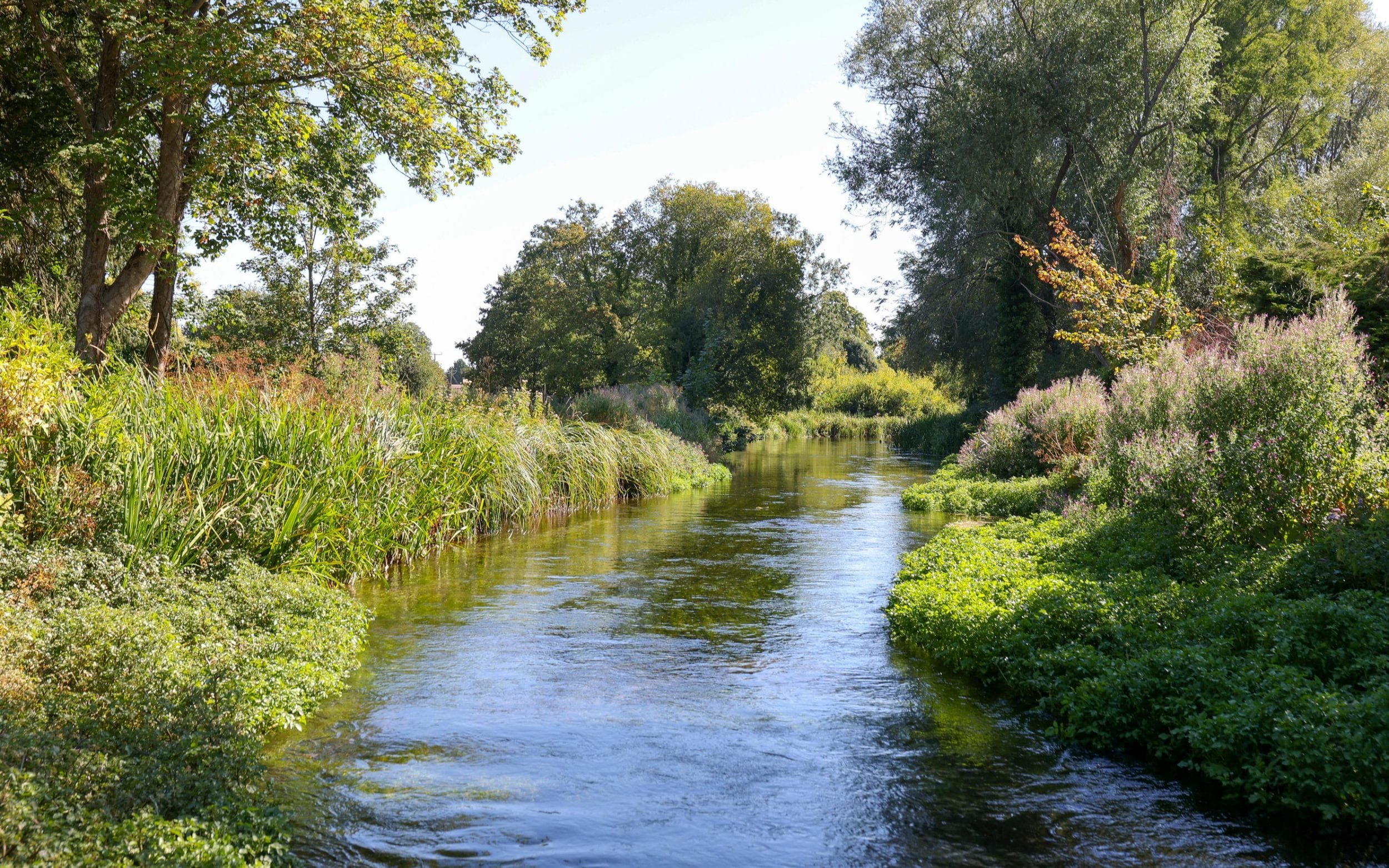THE FRAGILE BEAUTY OF CHALK STREAMS: WHY THEY MATTER TO YOUR LANDSCAPE
When you picture the English countryside at its most idyllic, you might imagine a chalk stream – clear and cool, weaving its way through a sun-dappled meadow, kingfishers flashing above the water and wildflowers lining its banks. It’s a scene that stirs something deep, and with good reason. Described by Sir David Attenborough as “one of the rarest habitats on earth” and they’re almost entirely unique to England.
If you’re lucky enough to have a chalk stream running through your land or even nearby you’re the custodian of something incredibly special. And if not, you can still draw inspiration from these extraordinary systems when shaping your garden or larger landscape. At Daniel Combes Garden Design, our belief is simple: the more you understand these habitats, the more you can do to protect, regenerate, and celebrate them.
You might not realise that around 85% of the world’s chalk streams are found right here in England. Their crystal-clear waters emerge from natural springs where chalk bedrock filters rainwater, creating a gentle, steady flow that maintains a near-constant temperature year-round. This creates the perfect conditions for a rich tapestry of life from aquatic plants and invertebrates to trout, grayling, otters and kingfishers.
Growing up in the Nadder Valley, beside one of these rare streams, Daniel Combes developed a deep connection with the chalk stream landscape. That connection now sits at the heart of every project the studio undertakes.
“Chalk streams make me think of clear, gently flowing water, water crowfoot and kingfisher,” Daniel says. “They’re uniquely English – wild, fragile, and full of life.”
When you incorporate these natural systems into your design thinking – whether by working directly with a chalk stream or drawing on its principles – you begin to see how transformative they can be. A healthy chalk stream brings vitality and biodiversity to any space. It can become the beating heart of your garden, inviting wildlife in and anchoring a wilder, more resilient landscape.
But these habitats are under enormous pressure. You’ve likely heard of the threats: agricultural runoff, sewage overflows, industrial pollution, and the over-extraction of water all take their toll. You might not see it immediately, but straightened channels, weirs, and compacted floodplains slowly choke these streams of life. The loss of meanders and native planting along the banks can strip these systems of the very things that make them thrive.
The good news? You can be part of the solution.
Whether you’re managing a garden, a larger estate or simply interested in rewilding a corner of land, you have the opportunity to help restore and reimagine these spaces. At Daniel Combes Garden Design, projects are already underway that are doing just that. In Dorset, for instance, the studio is working to de-canalise a chalk stream, allowing it to find its natural course again, creating a mosaic of wetland, wildflower meadow, scrub and woodland.
By thinking this way, by designing with nature, not just around it – you can help revive one of England’s most precious ecosystems. Chalk streams aren’t just picturesque backdrops. They’re living systems, essential to the health of our countryside and the diversity of our wildlife.
So whether you’re at the start of a garden project or looking to breathe new life into an existing space, consider what it means to welcome the ethos of the chalk stream. Let the land breathe. Let the water flow. And let your landscape become a place where beauty and biodiversity grow side by side.
Ends




